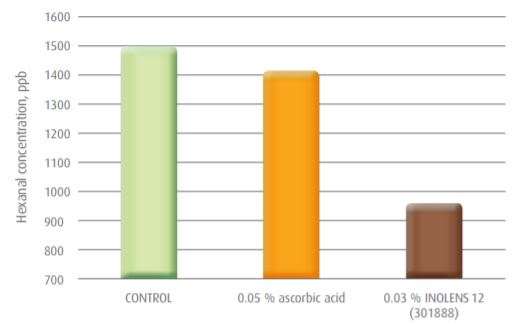Knowde Enhanced TDS
Identification & Functionality
- Ingredient Name
- Food Ingredients Functions
- Ingredients
- Rosemary Extract
- Food Additive Number
- E 392, INS 392
- Technologies
- Product Families
- Types
- Cookies, cakes,
- biscuits, cereal bars,
- pastries, pies, scones,
- cornets, wafers,
- crackers
- and more
Features & Benefits
- Labeling Claims
- Food Ingredients Features
- Benefits
Benefits of using INOLENS 12 (301888) and other INOLENS products for bakery applications are
- Shelf life extension naturally,
- Better oxidation management and product market
- Positioning,
- Fresher taste of products,
- 100 % natural non-allergenic formulations.
Applications & Uses
- Markets
- Applications
- Use Level
- 0.3
- Processing Need
Add to dry mix
- Application
Add to flour and other dry ingredients, mix well.
Technical Details & Test Data
- Oxidative changes were measured by Hexanal test
- For croissants: 14 days after production.
- For cookies: one, six and ten months after production.
Results
Graph 1: Results of hexanal concentration in croissants without antioxidant (control) and in croissants with addition of ascorbic acoid and INOLENS 12 (301888) after 14 days of storage

Graph 2: Results of hexanal concentration in butter cookies without antioxidant (control) and butter cookies with addition of ascorbic acid and INOLENS 12 (301888) after 10 months

- Conclusion
At usage level as low 0,03 % of INOLENS 12 (301888) in croissants and butter cookies, rancidity of products is greatly reduced comparing to non-treated control and product with addition of ascorbic acid. Shelf life can be extended up to two fold. While providing the benefit of protection, at the same time there was no negative change of taste, odor and other organoleptic properties of croissants and butter cookies.
Storage & Handling
- Storage conditions
- Croissants were stored in plastic foil at room temperature and relative air humidity of 50-55 %,
- Butter cookies were stored in plastic boxes at room temperature and relative air humidity of 50-55 %.

